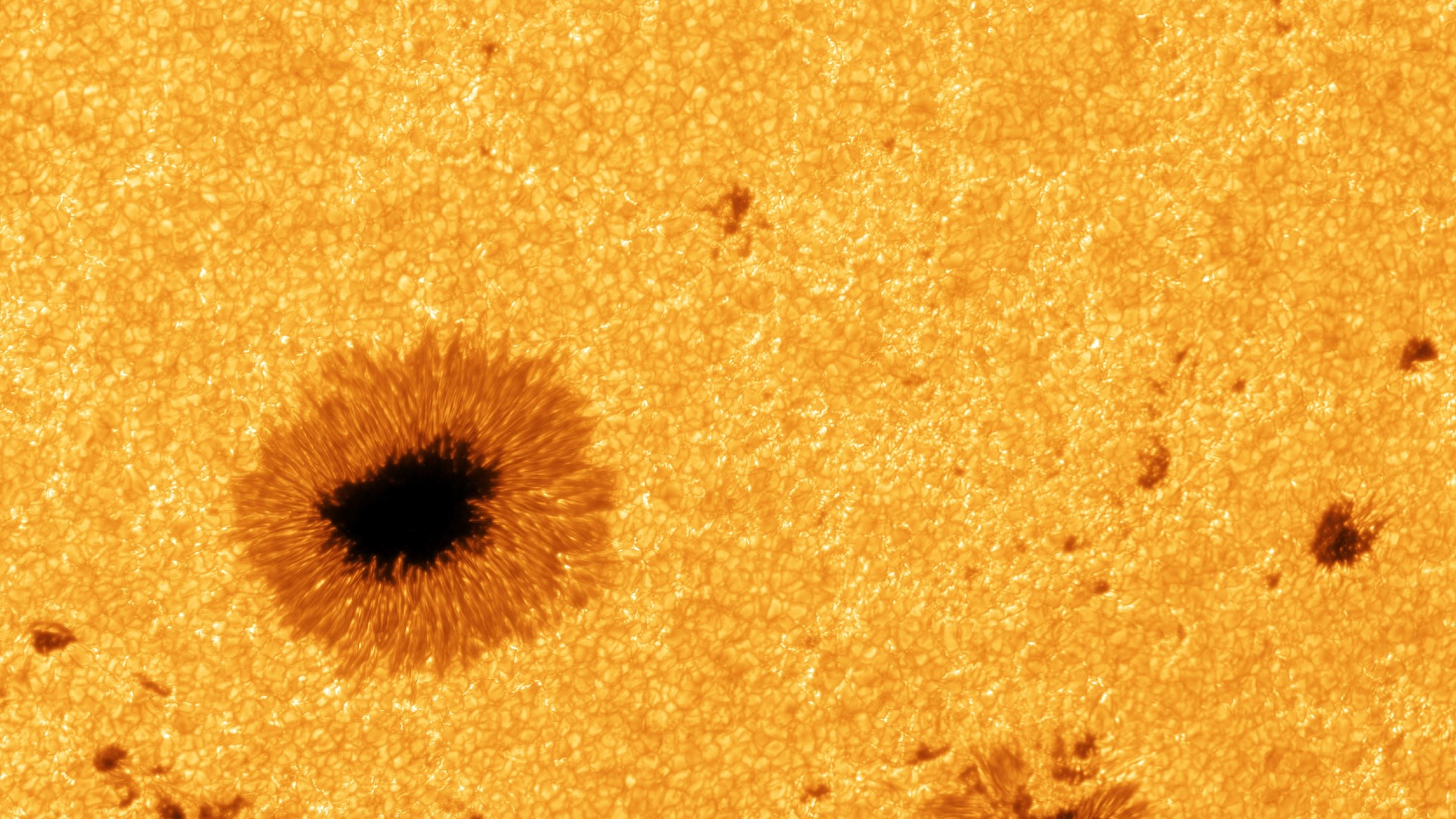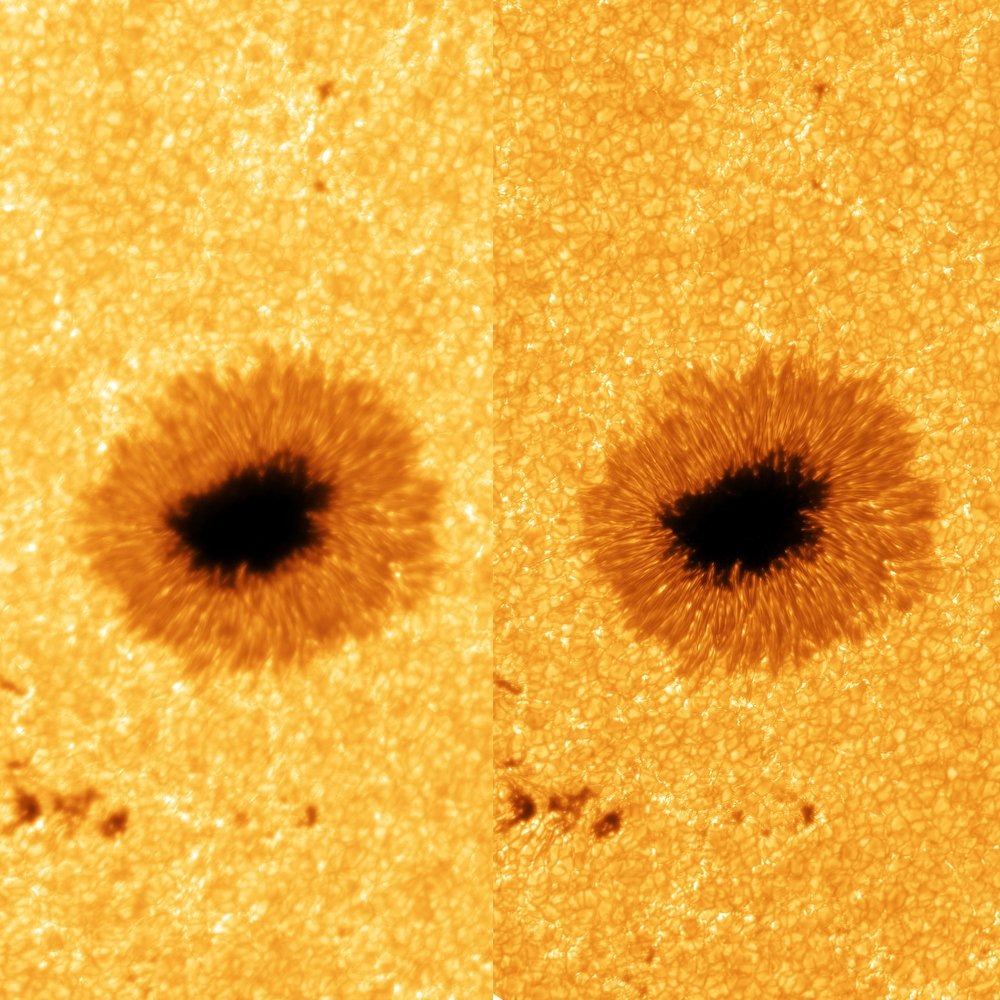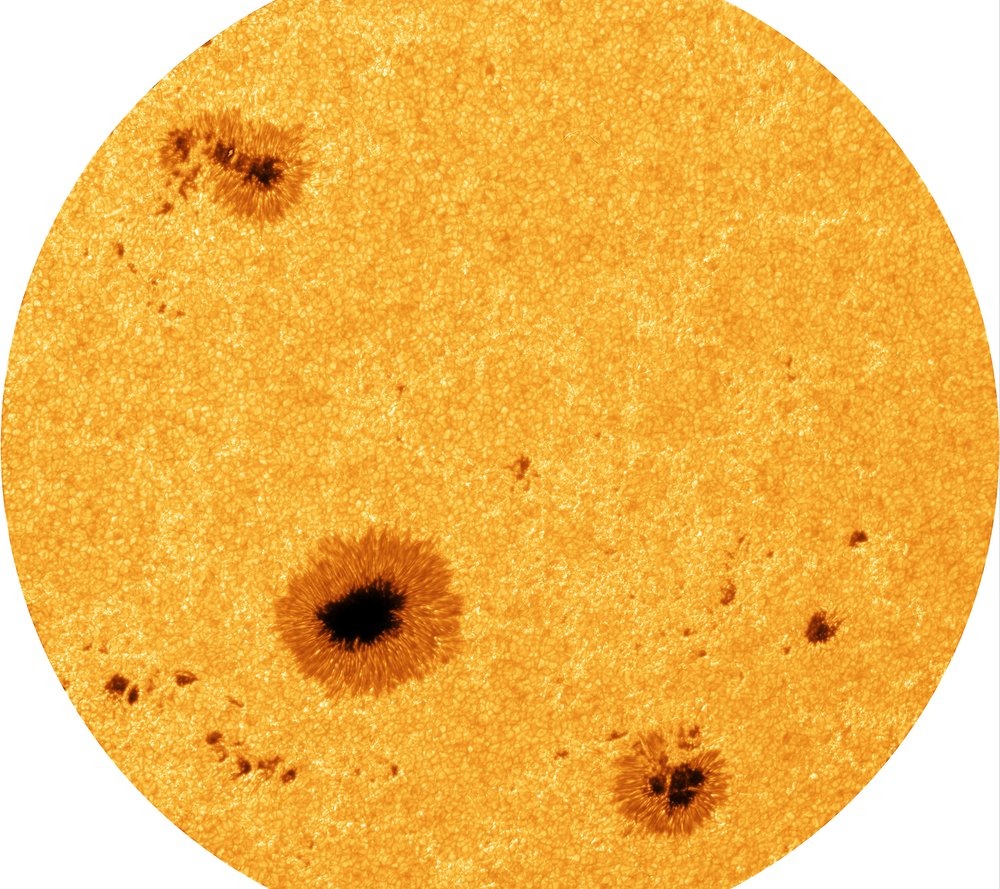New 8K-resolution photos of the sun show off incredible details of raging sunspots
Incredible new images of the sun's surface provide an unprecedented view of sunspots and other solar activity.

Incredible new images of the sun's surface provide an unprecedented view of raging sunspots and solar activity.
A new high-resolution camera system developed by the Leibniz Institute for Astrophysics Potsdam (AIP) for the Vacuum Tower Telescope (VTT), located at the Observatorio del Teide in Tenerife, reconstructed views of the sun with an 8K image resolution for the first time, according to a statement from AIP.
Solar observations often face a trade-off between field of view and resolution. Large solar telescopes provide high-resolution images but cover limited areas, while smaller instruments can monitor the entire solar disk but lack fine detail. However, the VTT offers both a wide field of view and commendable spatial resolution. The integration of the new camera system enhances this capability, allowing for comprehensive and detailed studies of active solar regions.
"In order to better understand solar activity, it is crucial not only to analyze the fundamental processes of the fine structure and the long-term development of global activity with various instruments, but also to investigate the temporal evolution of the magnetic field in active regions," Rolf Schlichenmaier, a scientist at the Institute for Solar Physics (KIS) in Freiburg, which operates the VTT, said in the statement.

The new camera system employs advanced image restoration techniques, compiling 100 short-exposure images — each with a resolution of 8000x6000 pixels — captured at 25 frames per second. This process yields reconstructed images with 8K resolution, effectively mitigating disturbances caused by Earth's atmosphere and achieving a spatial resolution of approximately 62 miles (100 kilometers) on the sun's surface.
Such precision enables the observation of dynamic solar processes on timescales as short as 20 seconds, according to the statement.

Using this technology, researchers have obtained high-resolution images covering areas up to 124,274 miles (200,000 km) in diameter, which is approximately one-seventh of the sun's diameter.
Get the Space.com Newsletter
Breaking space news, the latest updates on rocket launches, skywatching events and more!
In turn, the images reveal intricate details of sunspot groups, plasma flows and magnetic field structures that trigger solar flares. This not only enhances our understanding of complex solar dynamics, but lends insight for improved space weather forecasting.
Join our Space Forums to keep talking space on the latest missions, night sky and more! And if you have a news tip, correction or comment, let us know at: community@space.com.

Samantha Mathewson joined Space.com as an intern in the summer of 2016. She received a B.A. in Journalism and Environmental Science at the University of New Haven, in Connecticut. Previously, her work has been published in Nature World News. When not writing or reading about science, Samantha enjoys traveling to new places and taking photos! You can follow her on Twitter @Sam_Ashley13.
You must confirm your public display name before commenting
Please logout and then login again, you will then be prompted to enter your display name.
